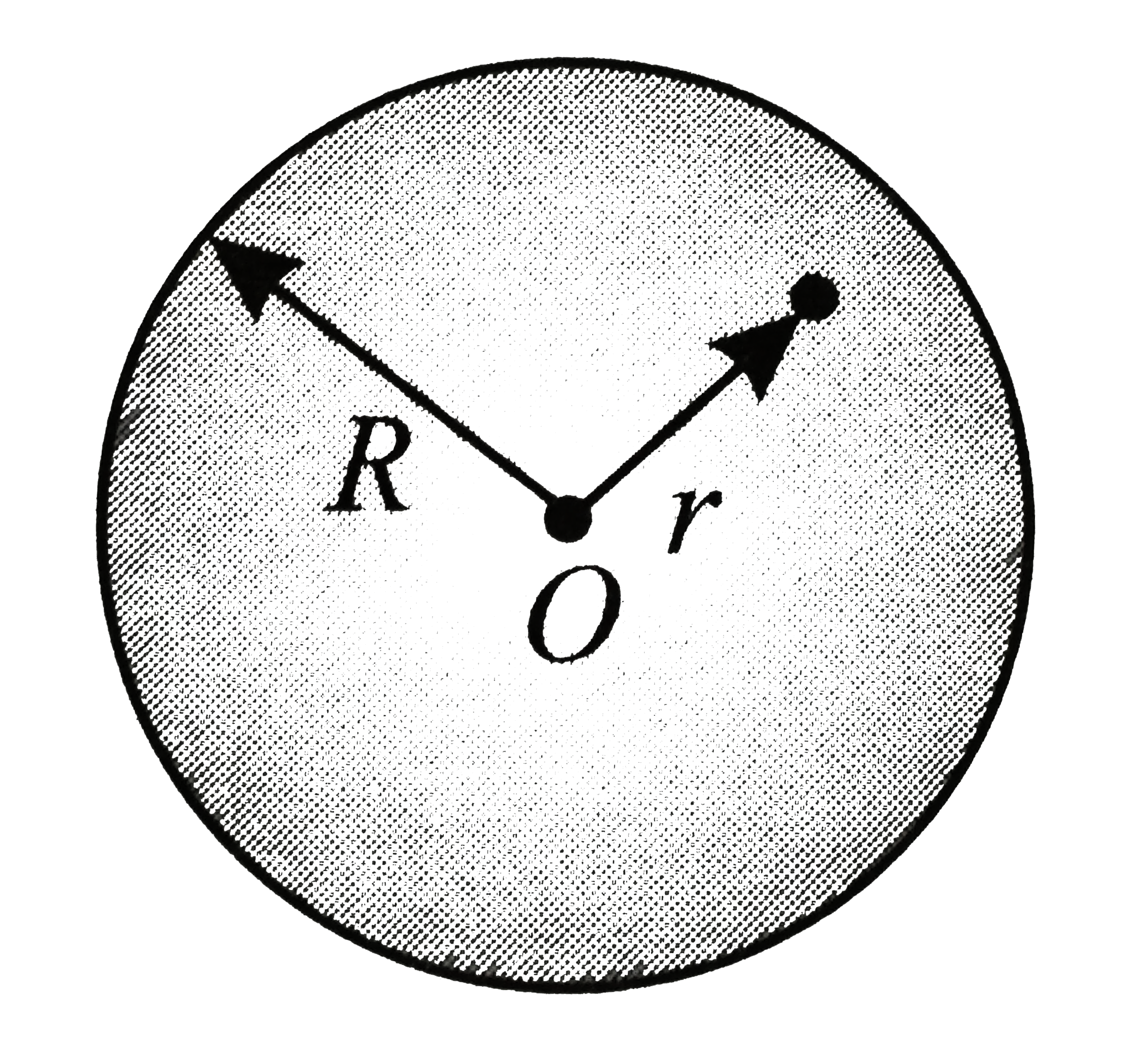An electric field converges at the origin whose magnitude is given by the expression E=100rN/C, where r is the distance measured from the origin.
Total charge contained in any spherical volume with its centre at origin negative.
Total charge contained at any spherical volume, irrespective of the location of its centre, is negative
Total charge contained in a spherical volume of radius 3 cm with its centre at origin equals 3×10−13C
Total charge contained in a spherical volume of radius 3 cm with its centre at origin has magnitude 3×10−9C.
The correct Answer is:A, B, C
As the electric field converges at the origin so total charge contained in any spherical volume, irrespective of the location, is negative.
By Gauss theorem ∫→E.d→s=q∈0
We have −E(4πr2)=q∈0⇒q=−3×10−13C
Topper's Solved these Questions
- BOOK - ALLENCHAPTER - MISCELLANEOUSEXERCISE - Exercise-031videos
MISCELLANEOUS
- BOOK - ALLENCHAPTER - MISCELLANEOUSEXERCISE - Exercise-041videos
MISCELLANEOUS
- BOOK - ALLENCHAPTER - MISCELLANEOUSEXERCISE - Exersice -05(B)20videos
MISCELLANEOUS
- BOOK - ALLENCHAPTER - KINEMATICS (MOTION ALONG A STRAIGHT LINE AND MOTION IN A PLANE)EXERCISE - BEGINNER S BOX-78videos
KINEMATICS (MOTION ALONG A STRAIGHT LINE AND MOTION IN A PLANE)
- BOOK - ALLENCHAPTER - PHYSICAL WORLD, UNITS AND DIMENSIONS & ERRORS IN MEASUREMENT EXERCISE - EXERCISE-IV8videos
PHYSICAL WORLD, UNITS AND DIMENSIONS & ERRORS IN MEASUREMENT
Similar Questions
A point charge q is placed at the origin . How does the electric field due to the charge very with distance r from the origin ?
View SolutionA solid insulating sphere of radius R has a nonuniform charge density that varies with r according to the expression ρ=Ar2, where A is a constant and rltR is measured from the centre of the sphere. Show that (a) the magnitude of the electric field outside (rgtR) the sphere is E=AR5/5ε0r2 and (b) the magnitude of the electric field inside (rltR) the sphere is E=AR3/5ε0.
 View Solution
View Solution
Knowledge Check
- Question 1 - Select One
The electric field in a region is radially outward and at a point is given by E=250 r V/m (where r is the distance of the point from origin). Calculate the charge contained in a sphere of radius 20 cm centred at the origin
A2.22×10−6CB2.22×10−6CC2.22×10−10CDZero - Question 2 - Select One
A particle is projected along a horizontal field whose coefficient of friction varies as μ=A/r2, where r is the distance from the origin in meters and A is a positive constant. The initial distance of the particle is 1m from the origin and its velocity is radially outwards. The minimum initial velocity at this point so the particle never stops is
A(a) ∞B(b) 2√gAC(c) √2gAD(d) 4√gA - Question 3 - Select One
suppose an electron is attracted towards the origin by a force k/r, where k is a constant and r is the distance of the electron form the origin. By applying bohr model to this system, the radius of nth orbit of the electron is found to be rn and
AEB2EC3ED4E
The electric field in a region is radially outward with magnitude E=αr .The charge contained in a sphere of radius R centered at the origin is K×10−10C if α=100Vm2 and "R=0.30m" .The value of K is
View SolutionThe electric field in a region is radially outward with magnitude E = 2r. The charge contained in a sphere of radius a = 2m centerd at the origin is 4xπε0. Find the value of x.
View SolutionThe electric potential at a point (x,y) in the x-y plane is given by V=−kxy. The field intentisy at a distance r in this plane, from the origin is proportional to
View SolutionLet there be a spherically symmetric charge distribution with charge density varying as ρ(r)=ρ(54−rR) upto r=R, and ρ(r)=0 for r>R, where r is the distance from the origin. The electric field at a distance r(rltR) from the origin is given by
View SolutionThe electric field in a region is radially outward with magnitude E=Ar0 . The charge contained in a sphere of radius r0 centred at the origin is
View Solution

